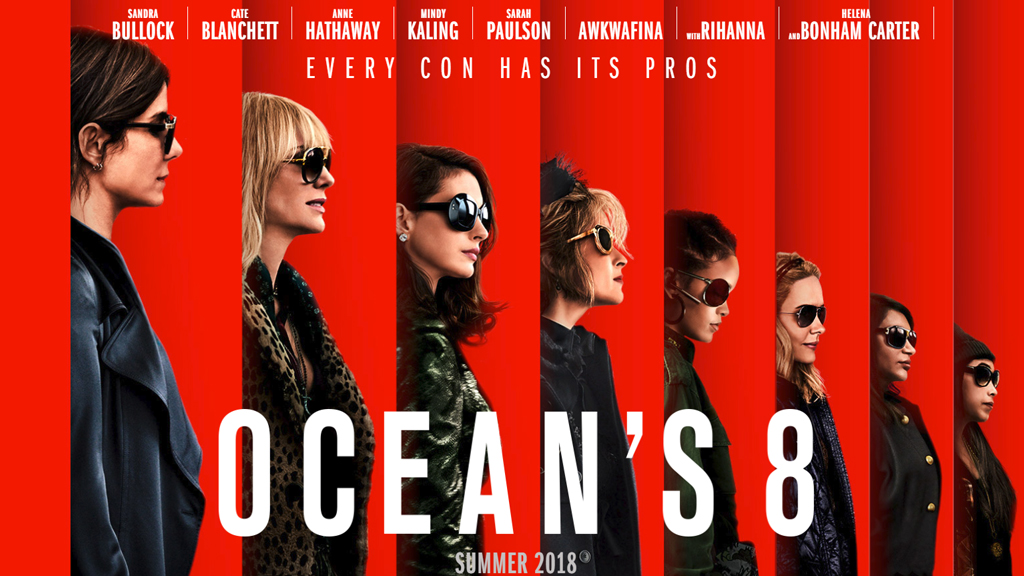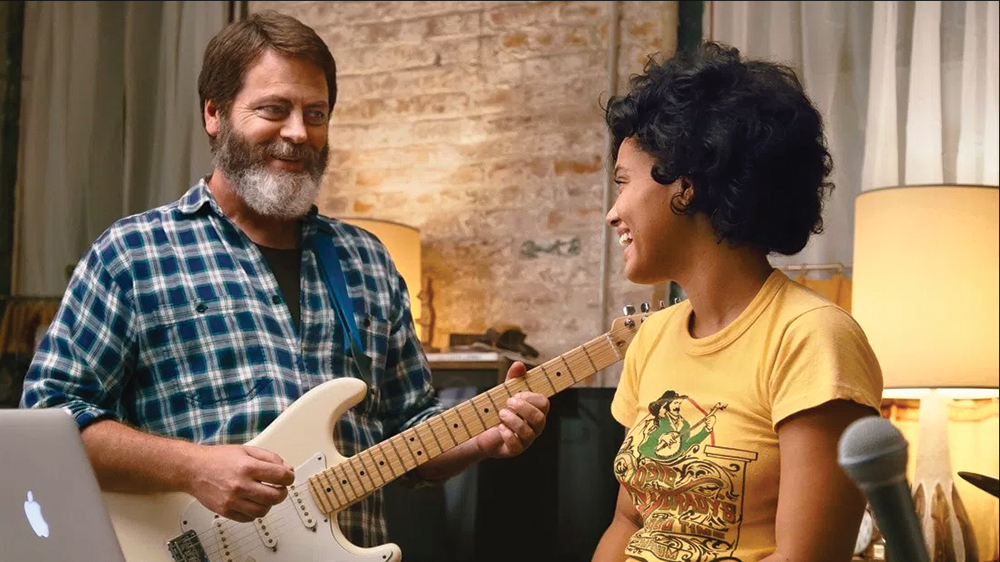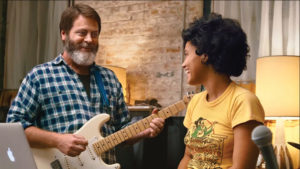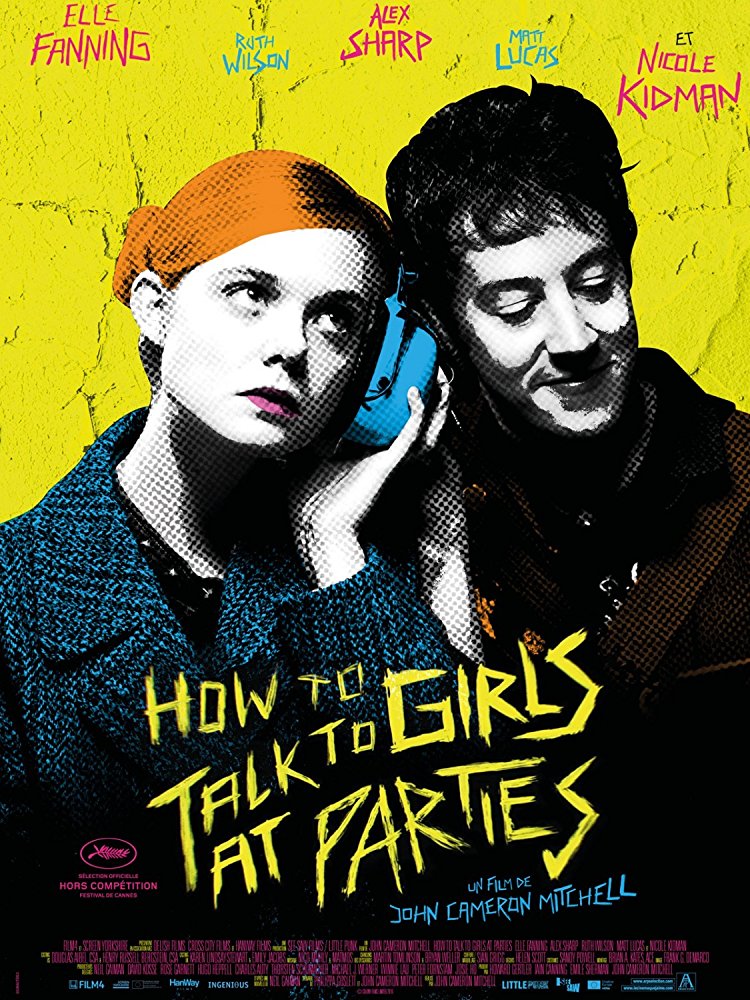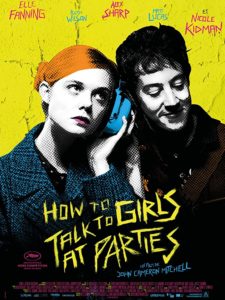Oceans 8
Posted on June 7, 2018 at 5:50 pm
B +| Lowest Recommended Age: | Middle School |
| MPAA Rating: | Rated PG-13 for language, drug use, and some suggestive content |
| Profanity: | Brief strong language |
| Alcohol/ Drugs: | Marijuana, alcohol |
| Violence/ Scariness: | Some peril |
| Diversity Issues: | Diverse characters |
| Date Released to Theaters: | June 8, 2018 |
| Date Released to DVD: | September 10, 2018 |
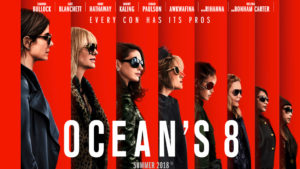
Heist films are irresistible, especially when they are as twisty and stylish as “Oceans 8.” First, there is the practicality of the puzzle part. I always love the way they set it up to show us how impossible it is, so we can fully appreciate the cleverness of the characters in coming up with plans to surmount the various traps and security features. And then things always go wrong in the moment, so we have the fun of seeing problem-solving in real time. But just as important is the luxury of the fantasy element. We get to identify with people who, like wizards and superheroes, operate outside of the usual rules. All we need is some very slight reason not to worry about the people who are being stolen from (they are usually either unworthy or so institutional it seems impersonal), and we’re on board.
“Oceans 8” has another reason to intrigue us as well. We are already very familiar, perhaps too familiar with the “Oceans 11” series, which rather wore out its welcome by the last in the trilogy and perhaps the original, starring Frank Sinatra and the Rat Pack. Freshening up the concept with an all-female group of grifters and thieves with a cast that features three Oscar-winners and a sensationally beautiful style icon gives it an embedded freshness and underdog quality. “A him gets noticed; a her gets ignored,” Debbie Ocean says. “For once, we want to be ignored.”
Debbie (Sandra Bullock) is just out of prison after five years, eight months, and twelve days. She explains to the parole board that she has learned her lesson and all she wants is “the simple life. Hold down a job, make some friends, go for a walk after work in the fresh air, pay my bills.” They buy it. And soon she is out, shoplifting herself a new wardrobe and swindling herself a hotel room. She visits the grave of her brother, Danny (the character played by George Clooney in the male “Oceans” movies), though the movie does leave open the possibility that his death might just be another con. And she gets in touch with two of her partners in grift from the past, Lou (Cate Blanchett), who has been dealing in petty cons like watering vodka, and art dealer Claude Becker (Richard Armitage), against whom Debbie seems to have quite a grudge.
Debbie has spent her time in prison devising a heist of delightful complexity and ingenuity. Of course in reality it was devised by director Gary Ross, who wrote the script with Olivia Milch, and one of their best ideas was to set the robbery at the most glamorous event in America, the annual Met Gala (that’s GAH-la, not GAY-la). Their plan: to get the event’s celebrity chair, an air-headed actress named Daphne Kluger (Anne Hathaway) to wear a $150,000,000 diamond necklace so they can steal it. And this gives us a peek into the most exclusive party of the year, with a delicious chance to get up close to huge celebrities in fabulously over-the-top gowns (though gala empress Anna Wintour is played by an anonymous extra in an impeccably coiffed wig).
This will involve a combination of talents from the psychological (persuading Kluger to choose an out-of-fashion designer and persuading Cartier to loan the necklace) to the technological (everyone needs a hacker these days) to the embedding of various moles to good old-fashioned pickpocketing. As we used to say in the 70’s, sisterhood is powerful. I won’t spoil any of the twists or surprises; I’ll just say that I enjoyed them all very much and this crowd and they are welcome to steal a necklace from me any time.
Parents should know that this film has criminal behavior, some mild peril, brief strong language, alcohol, and marijuana.
Family discussion: If you had a crackerjack team of thieves, what would you want to steal? What would be the biggest obstacle? What was the movie’s biggest surprise?
If you like this try: the documentary about the Met Gala, The First Monday in May and other sophisticated heist movies like the original and remake versions of “Oceans 11,” “The Italian Job,” and “The Thomas Crown Affair” as well as “How to Steal a Million” and “Topkapi”

